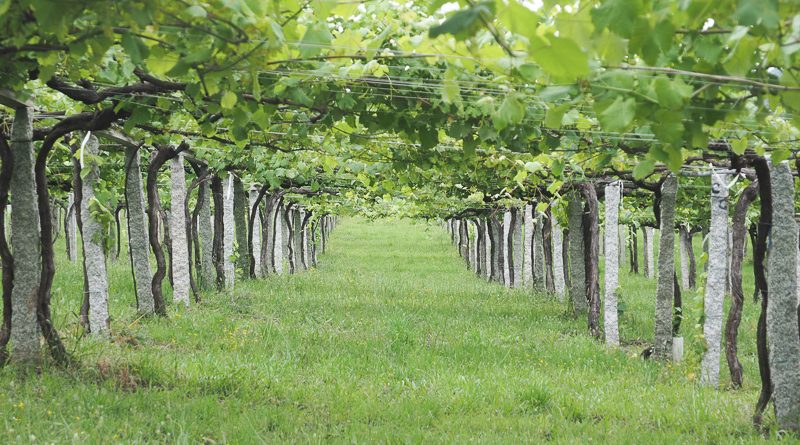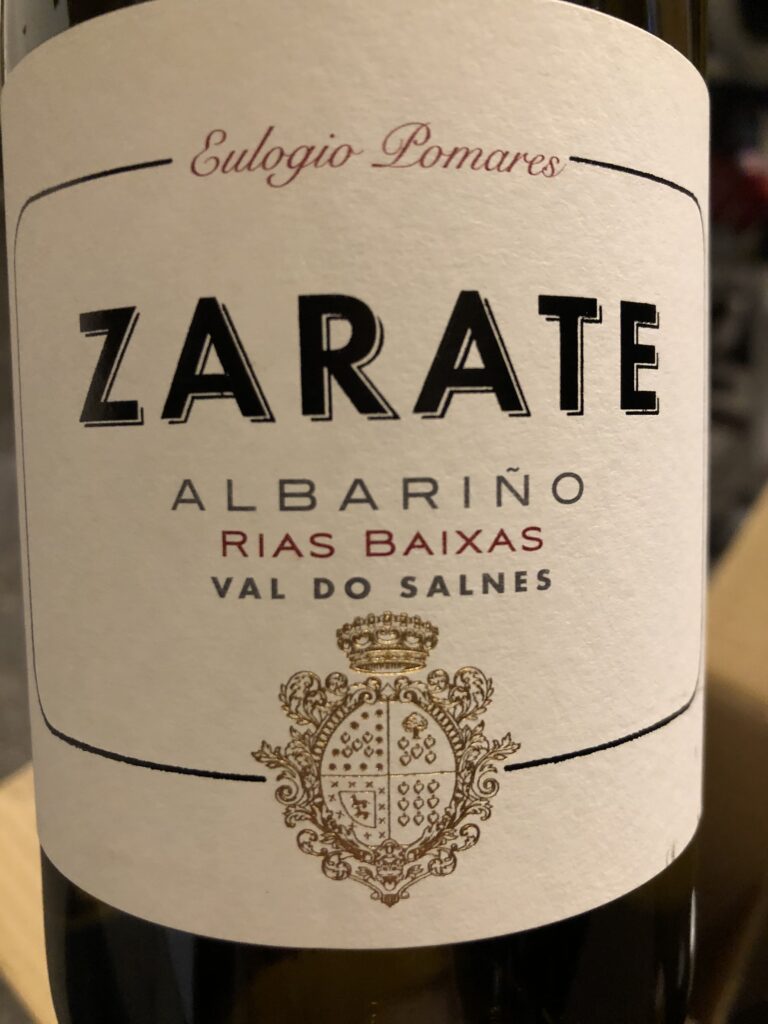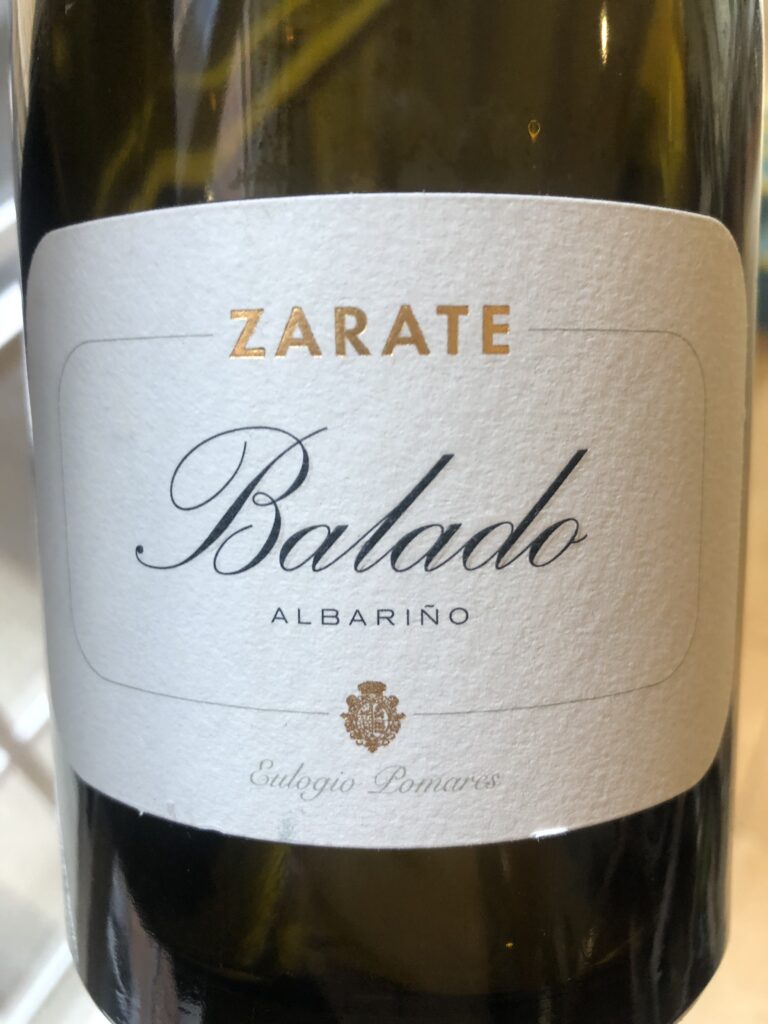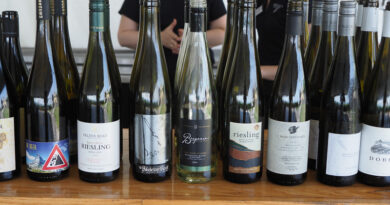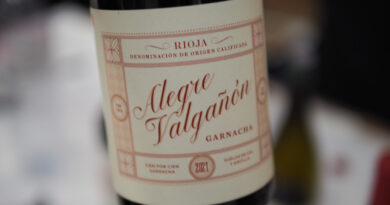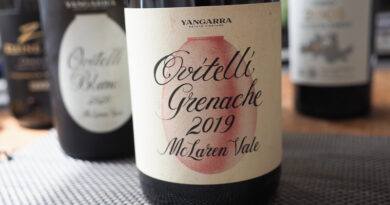Albariño: a Study
One of northern Spain’s most prolific white grapes, Albariño makes up the majority of plantings in Rías Baixas (90+ % ! ), as well as across the Minho River into Portugal’s Vinho Verde, where it is known as Alvarinho. Both words are derived from albo<albus, meaning ‘white, whitish’. It thrives in the granitic, well draining soils of the region, preferring dry feet and cooler nights, and away from the bracing winds and moisture of the Atlantic. This small-berry, low-yielding grape transmits wines with white flowers, peaches, apricots and almonds, with an intrinsic marine salinity. It can be vinified light and sprightly, with refreshing acidity and bounce, or left to hang and build ample flesh and alcohol. In recent years it has successfully taken hold around the globe, notably in coastal California, and New Zealand’s Gisbourne and Nelson, with smatterings in Uruguay, Okanagan Valley, and France. Previously we would have added Australia to this list, though almost 15 years ago it was proven that all the Albariño grown there was mislabeled, and was actually the French Savagnin grape.
Here are some recent Albariños Goode (JG) and I (TR) have tasted and been impressed by.
Zarate Albariño Val do Salnés 2020, DO Rías Baixas, Spain
Founded in 1707, the family owned Zarate estate is located in Rias Baixas’ Val do Salinas subregion. Their sloping, weathered granite vineyards are translated via Albariño, a grape intrinsically associated with the estate. Seventh-generation Eulogio Pomares runs this historic bodega today, farming almost fully biodynamically. This is from 30 year old vines, fermented native, and with three months on the lees in stainless. This is positively alive with a buzzy energy livening lime/lemon pith and peel, pear skin, green apple, over a bed of river stones, all gripped with granite’s inherent tension. A beaut, and with time ahead. 91/100 (TR)
Zarate Balado Albariño 2018, DO Rías Baixas, Spain
From the oldest vineyard of Albariño in Rias Baixas, planted pre-phylloxera, these granitic-soiled vines in Val do Salnés are around 150 years old, and farmed with some biodynamic principles. After a native ferment in stainless, this is left on lees for 9 months, without bâtonnage, or MLF. Profound, and powerful, with echoes of medicinal white cherry, broken stones, white peach, herbal lees filling the medium+ palate. Quite structural and concentrated, yet saline and fresh, Balado is a true treasure. 93/100 (TR)
Granbazan Ambar 2019, DO Rías Baixas, Spain
Granbazan’s 13.5 Ha vineyard is located in Vilanova de Arousa, one of the villages in the Val do Salnés, an area prized for its exceptional Albariño, and the largest of the subregions of Rías Baixas. Like most of Salnés, the vines are rooted in granite, planted en parra on granite pergolas about 2 metres above the ground to maximize wind exposure, and decrease humidity. This is the icon bottling of the winery, which you might discern from the tall, historic bottle and label. From older estate vines, this was macerated over 12 hours, and gravity fed into stainless tanks for a cool ferment over 5 weeks, and then remains in the tanks for 8 months on lees. A mid yellow hue, this saline wine leads with subtle aromas of honeysuckle, white peach, custard apple, and river stone across a svelte, granitically buzzing palate. 90/100 (TR)
La Caña Albariño 2020, DO Rías Baixas, Spain
From the Salnés Valley subregion of Rías Baixas, this organic, dry-farmed Albariño comes off vineyards planted from 1962 to 1984 on the region’s granitic sands. The grapes were cold-soaked for 12 hours and a mix of destemmed and whole cluster fruit. This was fermented in 500L & 600L puncheons and demi-muids (35%), with the remainder in stainless steel, aged sur lie for 8 months with biweekly bâttonage. Ripe white peach, pear, lime pith flood the juicy palate, seasoned with peach pit, apricot fuzz, and a kiss of anise on the lingering finish. The granitic grip is welcome and alluring, welcoming sip after sip. Well done, and a lovely example of the grape in this special place. This is sealed with a recyclable plastic Normacorc. 90/100 (TR)

Soalheiro x Gio Chezhia Ag.hora Alvarinho 2020 Monção and Melgaço, Vinho Verde, Portugal
12.5% alcohol. This is a collaboration between Soalheiro and Georgian winegrower Gio Chezhia who is making wine in Portugal. It’s made in amphora with six weeks maceration with 70% of the skins. Complex, structured and layered with lovely pear and citrus fruit, with nice acidity and a pithy edge. So detailed with lovely purity and some clay/earth hints. 94/100 (JG)
Luis Seabra Vinhos Granito Cru Alvarinho 2019, DOC Vinho Verde, Portugal
After a successful decade as winemaker at Niepoort, Luis Seabra decided to break out on his own. This is his line of wines exploring grape (in this case alvarinho) and terroir (the granite soils of Vinho Verde). This Alvarinho came from three plots of 25+ year old vines, rooted in the granitic soils of the village of Paderne, Melgaço. The destemmed fruit was native fermented and aged in used, oval 1000L and 2000L oval vats of eastern Europe oak. It remained there, with no sulphur, for 12 months on lees, without bâtonnage, prior to a 5 month stint in stainless before bottling. Hay and straw lead into a streamlined palate of tight lemon, green pear, verbena, wild mint, and ample granitic buzzing salinity that lingers far beyond the wine. There is a gentle pad of lees on the core to cushion, and counter the citrus tightness. Lovely energy and freshness here. 92/100 (TR)
Soalheiro Alvarinho Granit 2019, Moncão e Melgaço, DOC Vinho Verde, Portugal
Soalheiro is regarded as the epitome of Vinho Verde production, and for good reason. Luis Cerdeiro, along with his brother Joâo and sister Maria, have taken over the northern VV estate that their father Joâo planted in 1974, making them the 4th wine producer in VV at that time making and bottling their own wines to sell. Soalheiro is Portuguese for ‘sunny’, as their site, in the priced subregion of Moncão e Melgaço, is protected from the harsh Atlantic winds by a range of mountains. Their 15 estate hectares are rooted in granitic soils between 100-400m, including one small parcel of own rooted vines. They also have one experimental 2 ha parcel planted at 1100m on pure schist, in preparation for the changing climate. Granit comes from a specific selection of vineyards planted above 300m, showing off what Luis believes is the true granitic nature of Monção & Melgaço. This was fermented and rested in stainless, with regular bâtonnage. This is not about fruit, but about place. Focused and tense with that characteristic granitic buzz, this slender palate streams stone, pear skin, apricot fuzz, subtle lime blossom and firm lime pith through a lengthy, buzzing finish. This wine is alive with vibrancy, drinking beautifully now in youth, and with much time ahead. 93/100 (TR)
Anselmo Mendes Alvarinho Contacto 2019, DOC Vinho Verde, Portugal
From one of Vinho Verde’s groundbreaking and esteemed winemakers, this is Alvarinho from the Monção and Melgaço subregion, widely seen as the highest quality cru for alvarinho. Contacto refers to the time this wine has spent on skins (vs his straight Muros Antigos Alvarinho). This is sourced from Monção’s Quinta da Torre, and organic vines siding the river, rooted in stony, granitic soils. After 12 hours on skins and a native ferment, this spent 3-4 months on lees. Seamless and lengthy down the slender frame, with meadow herbs, pear skin, yellow pear, white grapefruit pith, and a precise freshening of dried and fresh green herbs. Just a buzz of texture along the sides deftly hems this in to a humming granitic finish. Beauty now in youth, but will continue to impress with a couple of years in the cellar. 92/100 (TR)
Provam Portal do Fidalgo Alvarinho 2019, DOC Vinho Verde, Portugal
Provam is a group of 10 like minded producers in Vinho Verde who came together to make wines as a collective in 1992, and includes such luminaries such as Anselmo Mendes and Francisco Leandro. The name stands for Productores de Vines Alvarinho de Monção. This alvarinho is from the prized northwestern subregion of Monção e Melgaço, and was aged a few months in older wood. Tight and bright, multilayered with green apple, tight pear, lemon, and a refreshing marine salinity that streams this slender wine to a lengthy finish. There’s a lovely savoury note to temper the pure fruit. 90/100 (TR)
Falua Barão do Hospital Alvarinho 2020, Monção e Melgaço, DOC Vinho Verde, Portugal
Falua was founded in 1994 with the aim of asserting itself as a reference in the production of wines from the Tejo region and which quickly grew to other regions. In 2017, VITAS Portugal acquired Falua. The title Barão do Hospital was awarded to one of the previous owners of Quinta do Hospital in the 12th century. These alvarinho grapes were destemmed and had a few hours skin contact prior to a cool ferment in stainless, where it remained on lees for 6 months. 10% was aged on lees in used French oak. The lees and wood treatment is felt on the creamy palate, with wood spices lining the textural white peach, ripe pear, and fragrant quince fruit. The expansive palate is held easily in check with citrus-laced acidity, and a buzzy granite underlay. 90/100 (TR)
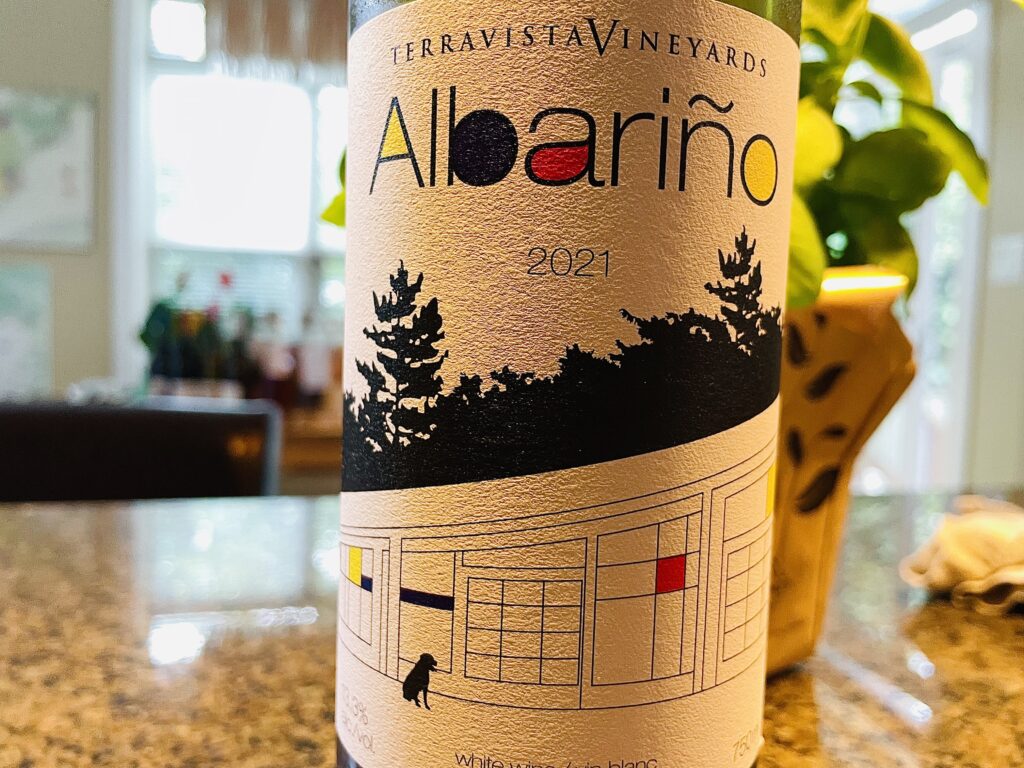
Terravista Vineyards Albariño 2021, Naramata Bench, Okanagan Valley, BC, Canada
Under the previous owners and founders, Bob and Senka Tennant, Albariño was first planted in BC in the late 2000s on a sloping, rocky property on Naramata Bench. They were the first (still only?) winery to sell this Galician grape commercially in Canada. This year, for this first time, the entirety of this fruit comes off their estate Lone Hand Ranch. It was picked in 2 lots, whole cluster pressed and cool fermented in stainless until dry. Albariño it is, with white peach, apricot fuzz, lime pith, river stones, a lick of anise, and fresh green herbs, the latter more an Okanagan effect. The whole has a buzzy, fresh vibrato undercut that finishes with a lingering saline note. Naramata pure, this is a lovely version, drinking very smartly now. 92/100 (TR)
Soalheiro Primeiras Vinhas Alvarinho 2020 Monção & Melgaço, Vinho Verde, Portugal
13% alcohol. (£22.50 The Wine Society)
Made from the ‘first vines’, as in first planted – they are over 40 years old. This is a beautiful expression of Alvarinho, with lovely ripe yellow plum and apricot fruit with a rich texture in the mouth but also fresh, chalky, saline citrus fruit. It’s really serious with nice freshness to the generous stone fruits, with a fine tapering finish. Superb stuff. 94/100 (JG)
Vent’Oz Alvarinho 2021 Vinho Verde, Portugal
12% alcohol. (£8.99 Waitrose) This Portuguese Alvarinho is bright and pure without any of the fizziness that Vinho Verde sometimes has. It shows lovely citrus fruit with a twist of nectarine and even some cherry. 87/100 (JG)
Lagar de Cervera Albariño 2021 Rías Baixas, Spain
12.5% alcohol. (£14.99 Waitrose) This shows a nice density of citrus fruit with some notes of green apple alongside the bright lemony acidity, and a twist of apricot adding some interest and exoticism. 90/100 (JG)
Tesco Finest Viñas del Rey Albariño 2021 Rías Baixas, Spain
12.5% alcohol (£9 Tesco) This is powerful with a core of lovely citrus fruit together with some apricot richness, and it has a taut feel in the mouth with chunky acidity. Lively and intense. 89/100 (JG)
Laurent Miquel Albarino 2021 IGP Aude, France
13% alcohol (£11.50 Sainsbury’s) This is brightly aromatic with mandarin and pear, as well as crisp citrus fruit. The palate is bright and fruit-driven with intense lemon, mandarin and apricot notes, and a layered, textural quality, finishing a bit salty. Lots of interest here: it’s very crisp and fruit-focused, but there’s also some depth of flavour here. 92/100 (JG)
Foncalieu Extraordinaires Sillages Albariño 2021 Pays d’Oc, France
13% alcohol. This is from Foncalieu’s organically farmed Puichéric vineyard. It has a fruity, aromatic nose of melon, apricot, mandarin and lime. The palate has a slight hint of dried herbs as well as fresh fruity notes, with a limey core showing some apricot fringes. Bright with good acidity and focus, and a subtly pithy, saline finish. 90/100 (JG)
Famille Fabre Grande Courtade L’Instant Rare Alvarinho 2020 Pays D’Oc, France
12.5% alcohol. Juicy and bright with some melon and pear notes as well as a citrus core. It’s quite fleshy with some depth to the fruit. There’s a pleasant stony citrus flavour here, and just a twist of marmalade and apricot on the finish. Attractive, pure and fresh. 89/100 (JG)
Martín Códax Albariño 2020 Rías Baixas, Spain
12.5% alcohol (£13.49 Majestic, £10.99 mix six). This is bright and focused with appealing citrus fruits complemented by a touch of pear and apricot richness. It’s zippy and quite brisk, with good acidity and nice purity. A really good example of this grape. 89/100
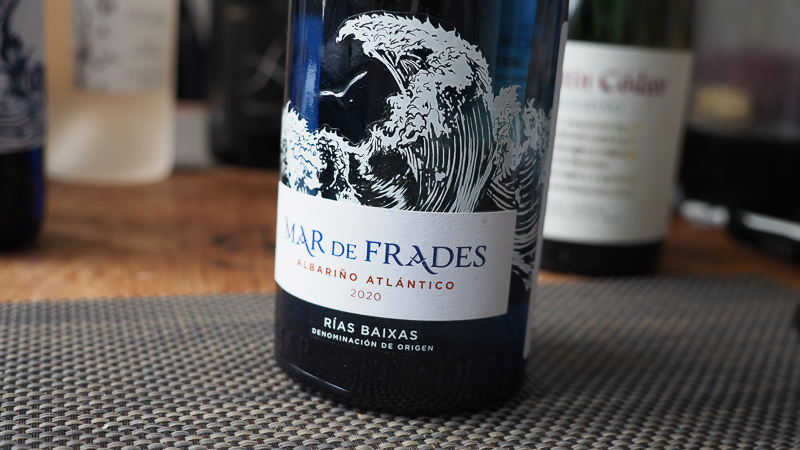
Mar de Frades Albariño Atlántico 2020 Rías Baixas, Spain
12.5% alcohol. Distinctively packaged in a blue bottle. Full yellow in colour, this shows some waxy, pithy notes as well as yellow plum and citrus, with a powerful, saline limey core and keen acidity. It’s full and quite bracing with a lovely mineral, saline finish. 91/100 (JG)
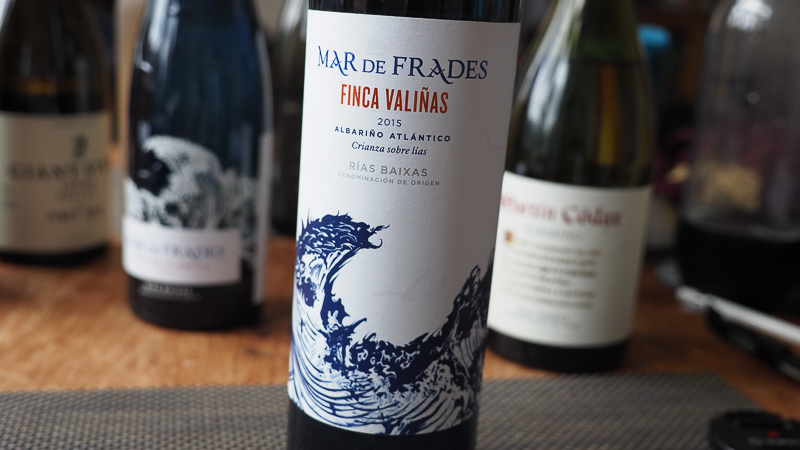
Mar de Frades Finca Valiñas Albariño Atlántico 2015 Rías Baixas, Spain
13% alcohol. This is from a single vineyard planted 50 years ago on granite soils, and it’s barrel-fermented. Deeply coloured, this has an intriguing nose of wax and honey with some mandarin and lime notes. The palate is intense and vivid with lively citrus and pear fruit, as well as a hint of apple, and some nutty complexity. 93/100 (JG)

